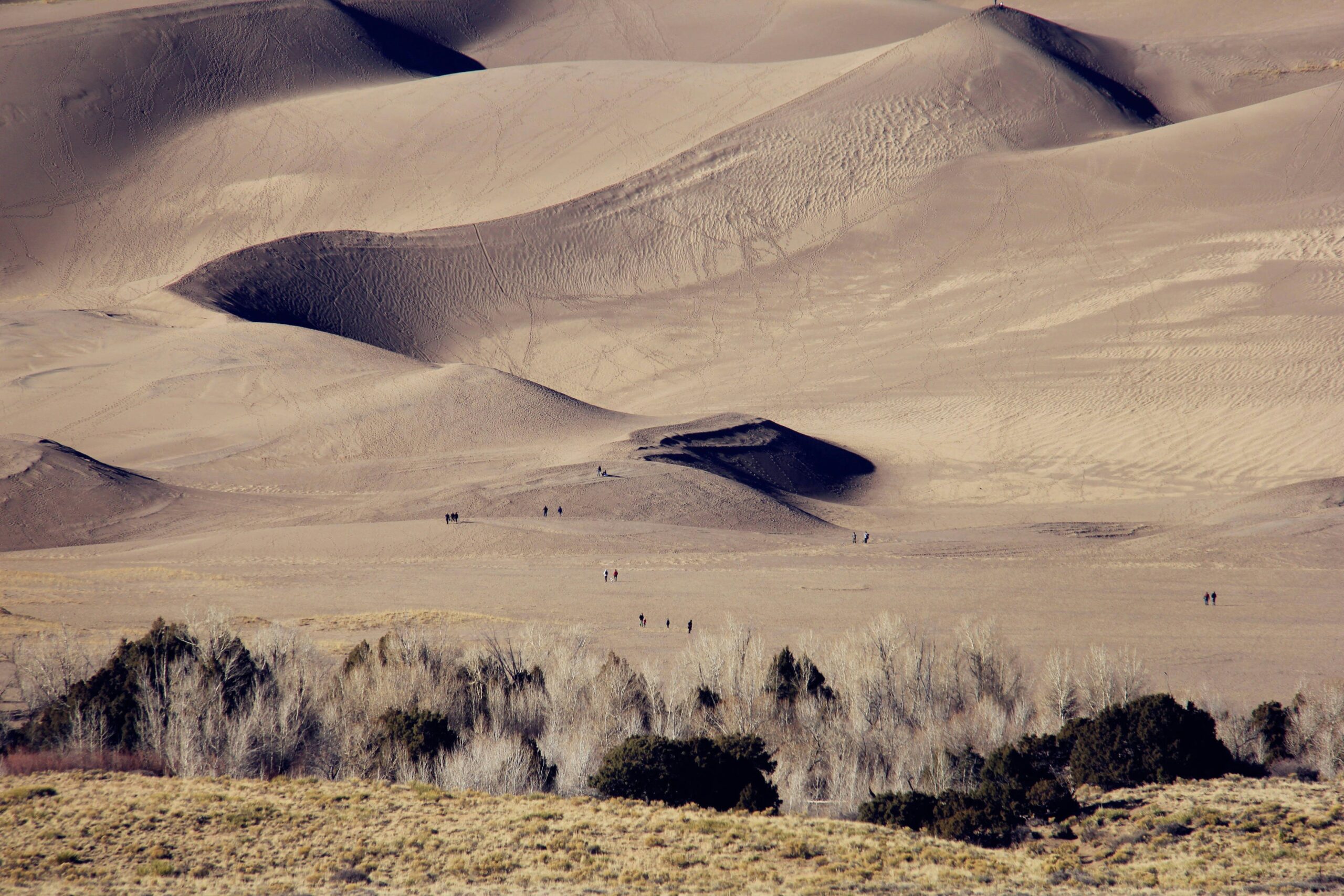Discover the Majestic Beauty of Great Sand Dunes National Park
Are you ready for an adventure like no other? Look no further than Great Sand Dunes National Park! Nestled in the heart of Colorado, this unique and awe-inspiring landscape is a must-visit destination for nature lovers and thrill-seekers alike.

Disclosure: Please note that some of links below are affiliate links and at no additional cost to you, Colorado Frontiers™ may earn a commission.
The Tallest Sand Dunes in North America
One of the main attractions of Great Sand Dunes National Park is its towering sand dunes, which are the tallest in North America. These majestic formations, reaching heights of up to 750 feet, create a surreal and breathtaking sight against the backdrop of the Rocky Mountains.
Whether you’re an experienced hiker or just looking for a fun day out, exploring the dunes is an adventure you won’t want to miss. Strap on your hiking boots and embark on a journey to the top of these sandy peaks. The feeling of accomplishment and the stunning panoramic views from the summit will leave you in awe.
A Playground for Outdoor Enthusiasts
Great Sand Dunes National Park offers a wide range of outdoor activities for all ages and skill levels. From sandboarding and sand sledding down the dunes to hiking and backpacking through the diverse ecosystems, there’s something for everyone to enjoy.
For thrill-seekers, sandboarding and sand sledding are a must-try. Grab a board or sled and glide down the sandy slopes, feeling the adrenaline rush as you navigate the curves and twists of the dunes. It’s a thrilling experience that will make you feel like a kid again.
If you prefer a more relaxed pace, take a leisurely stroll along the Medano Creek. During the spring and early summer, the creek offers a refreshing oasis where you can dip your toes in the cool water and enjoy a picnic with family and friends.
Discover Unique Wildlife and Plants
Great Sand Dunes National Park is not only home to impressive sand dunes but also a diverse array of wildlife and plants. As you explore the park, keep an eye out for elusive creatures such as black bears, mule deer, and coyotes. Birdwatchers will delight in the opportunity to spot rare species like the peregrine falcon and the white-faced ibis.
Don’t forget to take a moment to appreciate the incredible resilience of the park’s plant life. Despite the harsh conditions, you’ll find a variety of plants, including prickly pear cacti, yucca, and even wildflowers during the spring and summer months. It’s a testament to the adaptability and beauty of nature.
Top Places to Stay Near Great Sand Dunes National Park
Plan Your Visit
When planning your trip to Great Sand Dunes National Park, keep in mind that the best time to visit is during the spring and fall when the weather is mild and the crowds are smaller. The park is open year-round, but be prepared for varying weather conditions, including hot summers and cold winters.
There are several campgrounds within the park where you can spend the night under the stars and wake up to the stunning views of the sand dunes. If camping isn’t your style, there are also nearby hotels and lodges that offer comfortable accommodations.
Before you go, make sure to check the park’s website for any updates or closures. It’s always a good idea to come prepared with plenty of water, sunscreen, and appropriate footwear for exploring the dunes.
Conclusion
Great Sand Dunes National Park is a hidden gem that offers a truly unique and unforgettable experience. Whether you’re seeking adventure, natural beauty, or simply a peaceful retreat, this park has it all. So pack your bags, grab your camera, and get ready to discover the majestic beauty of Great Sand Dunes National Park.
